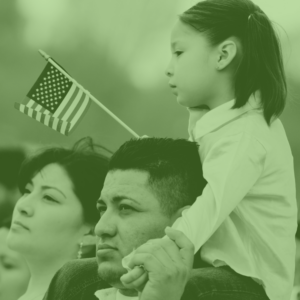Illinois is ahead of the curve in promoting educational reforms and supports that value early childhood education. Relatively nascent advocacy efforts endorse a more expansive continuum approach, especially birth-to-age 8 (or third grade), to ensure that early education benefits are thoughtfully and purposefully carried over into the early grades. Vital to such discussions are the ways in which such continuum reform efforts could benefit the state’s rapidly growing diverse language learner population.
What is perhaps most striking to me is that if children begin the transition to English before they are well-grounded in their native tongue—generally achieved around the third grade benchmark—it can actually limit their English language development. English-only approaches (or transitions into English instruction before students have a well-founded understanding of oral language in their first language) can serve as a detriment to the vital quest for high levels of academic English language and literacy.
Promoting bilingualism and biliteracy is nothing short of paramount among our student population. Close to one of every four Illinois public school children is speaking a language other than English in the home (22%). Many of these students at one point identify as English Language Learners (ELLS)—who now represent close to one out of every 10 students. These students face the immense pressure of mastering Standard English and becoming fully literate, essentialities for scholastic and eventual labor market success.
ELL children, like all children, are not only able to learn subject content in two languages, but they are likely to gain cognitively, linguistically, culturally and, in the end, academically from dual language learning. It is particularly within the infant-toddler years that the human brain is most adept for learning multiple languages. This early language exposure and learning does not postpone the acquisition of English but catalyzes increased neurological activity in ways that enhances future cognition.
The idea that building the first language can actually nurture the transition into academic English might seem counter-intuitive for those who assume the more English a student is exposed to, the better. Driving the notion of dual language development home for me was a compelling argument made by admirable scholar Linda Espinosa in a 2008 report aptly titled, “Challenging Common Myths About Young English Language Learners.” Espinosa writes:
While English can be successfully introduced during the preschool years, if it replaces the home language, and children do not have the opportunity to continue to learn in the language they know, their future linguistic, conceptual, and academic development in English is at risk. Systemic, deliberate exposure to English during early childhood combined with ongoing opportunities to learn important concepts in the home language results in the highest achievement in both the home language and English by the end of third grade and beyond.
As I work with the Latino Policy Forum’s education team to expand our education focus from only preschool to a broader birth-to-age eight focus, I keep thinking of how critical it is to foster the first language of young learners with a purposeful introduction of English in the preschool years:
- Encourage parents and caregivers to impart ideas and have fruitful communication in their native language.
- Support bilingual preschool programs that affords intentional supports to cultivate language development with specific instructional strategies attuned to second language development.
- Carry over dual language strategies to the early grades.
As the Latino Policy Forum works to expand its early education work, prioritizing early language and literacy development continues to be at the forefront of my mind. I continue to be inspired by the opportunity for consistency and coherence in early language and literacy development offered by the birth-to-8 approach facilitating a fruitful integration of standards, instruction, and assessments.




